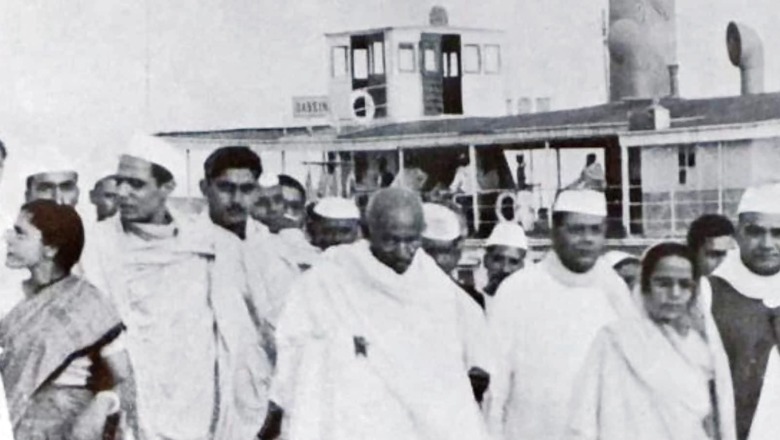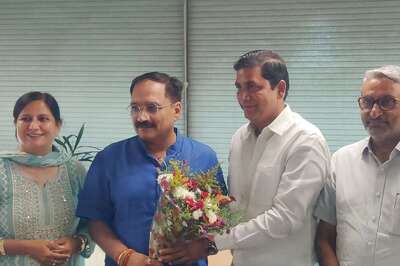Classes With News18: Why Did Gandhi Launch The Salt March? What Was The Civil Disobedience Movement?

views
Salt March, also known as Dandi March or Salt Satyagraha, was a major non-violent protest in India led by Mahatma Gandhi in March-April 1930. It was the first act of the larger civil disobedience movement satyagraha that Gandhi began against British rule in India. It extended into early-1931 and Gandhi received widespread support from Indians.
Gandhi found in salt a powerful symbol that could unite the nation. On January 31, 1930, he sent a letter to Viceroy Irwin stating eleven demands. Among them was the demand to abolish the salt tax. Salt was something consumed by the rich and the poor alike, and it was one of the most essential items of food. Gandhi declared that the tax on salt and the government monopoly over its production revealed the most oppressive face of British rule in India.
In the letter, Gandhi wrote that if the demands were not fulfilled by March 11, Congress would launch a civil disobedience campaign. Irwin was unwilling to negotiate, which led to Gandhi starting the Salt March accompanied by 78 of his trusted volunteers.
The march was for over 240 miles, starting from Gandhi’s ashram in Sabarmati to the Gujarati coastal town of Dandi. The volunteers walked for 24 days, about 10 miles a day. Gandhi urged everyone to peacefully defy the British. On April 6, he reached Dandi, and ceremonially violated the law, manufacturing salt by boiling seawater.
Civil Disobedience Movement
About 60,000 people including Gandhiji were arrested by the Britishers. The government tried to suppress the civil disobedience movement with more laws and censorship, and the Congress Party was declared illegal.
The colonial government began arresting the Congress leaders one by one which led to violent clashes in several palaces. Peaceful satyagrahis were attacked, women and children were beaten, and about 100,000 people were arrested. However, they continued the movement. Unline the non-cooperation movement, Gandhiji continued with the movement despite incidents of violence in Calcutta and Karachi.
The Satyagrahis boycotted foreign clothes, liquor shops were picketed. Peasants refused to pay revenue and chaukidari taxes, village officials resigned, and in many places, forest people violated forest laws – going into Reserved Forests to collect wood and graze cattle.
On May 21, 1930, Sarojini Naidu led a peaceful non-violent protest against the Dharasana Salt Works. The police lathi-charged the protestors brutally and it led to two deaths and others severely injured.
The movement had shaken the British government. Its non-violent nature made it difficult for them to suppress it violently and it also pushed India’s freedom struggle into the limelight in western media.
Gandhiji was released from prison in 1931. He met Lord Irwin who wanted to put an end to the civil disobedience movement. Gandhi decided to call off the movement and entered into a pact with Irwin on March 5, 1931. By this pact, Gandhiji consented to participate in a Round Table Conference (the Congress had boycotted the first Round Table Conference) in London and the government agreed to release the political prisoners.
In December 1931, Gandhiji went to London for the conference, but the negotiations broke down and he returned disappointed. Back in India, he discovered that the government had begun a new cycle of repression. Ghaffar Khan and Jawaharlal Nehru were both in jail, the Congress had been declared illegal, and a series of measures had been imposed to prevent meetings, demonstrations, and boycotts. With great apprehension, Mahatma Gandhi relaunched the Civil Disobedience Movement. For over a year, the movement continued, but by 1934 it lost its momentum.
To learn about other topics taught in school, explained by News18, here is a list of other Classes With News18: Queries Related to Chapters on Elections | Sex Versus Gender | Cryptocurrencies | Economy & Banks | How to Become President of India | Post Independence Struggle | How India Adopted Its Flag | Formation of States & United India | Tipu Sultan | Indian Teachers Day Different from Rest of the World |Queen Elizabeth & Colonialism |
Read all the Latest Education News here


















Comments
0 comment